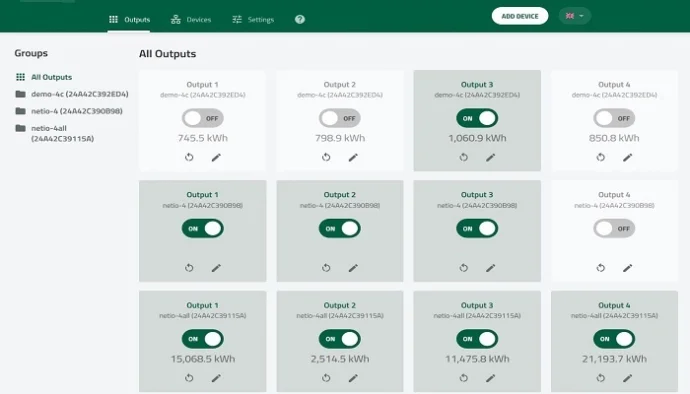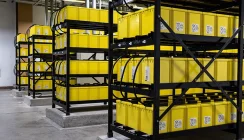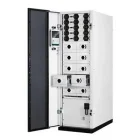How Computer Room Power Monitoring and Control Systems Assist Remote Working
For many organisations, the need to provide secure and reliable IT facilities has never been greater. Many are now operating a hybrid mixture of on-premise and Cloud IT services using products such as the office packages available from Google and Microsoft, in addition to video conferencing and webinar platforms. IT managers and the support services they provide therefore need to look for low-cost tools that can help them deliver the service uptime expected and to manage several operational locations.
Computer Room Support Systems
Organisations vary in their investment levels when it comes to critical infrastructure for their computer rooms. Most will have some form of power protection and will have installed an uninterruptible power supply which may be a line interactive or online UPS design. Dependent on room size and ambient temperatures, there may also be some form of cooling such as a wall mounted air conditioner.
Uninterruptible power supplies and air conditioners can be classed as critical infrastructure systems. Alarm conditions can occur and for most organisations with on-site staff, an audible alarm has been sufficient to indicate the need for unit inspection or a service visit.
More advanced UPS systems and AC units may also be installed with an SNMP (simple network management protocol) card to provide the devices with a local Ethernet/IT network connection for remote monitoring. If a fault condition occurs the IT network manager and designated engineers can receive notifications and alarm codes to investigate. If there is a connection to the local IT network via SNMP, remote diagnostics is possible to determine the scale of the problem and potential impact on IT services. If the incident is serious then the local IT manager or a site engineer can inspect locally.
Remote Environment Monitoring Solutions
When a UPS system or air conditioner generates an alarm notification it is very often the problem may already be critical. Whatever has caused the issue has generally been around for some time and with a suitable monitoring device could have been detected earlier.
Environment monitoring devices provide a low-cost way to monitor the total computer room environment and/or the server racks and computer cabinets within them. A typical environment monitoring device is supplied with a temperature monitoring sensor or a temperature & humidity sensor.
The ideal temperature level within a computer or server room is 18-27°C. The ideal humidity for a server room is 40-60% relative humidity. Outside of these levels problems can occur leading to component degradation and erratic operation of not only the critical infrastructure systems but the IT servers and networking devices. The rooms are also less comfortable to work in for IT staff and maintenance engineers.
With user-defined pre-set thresholds for temperature and humidity, levels can easily be monitored. If they fall or rise outside of the threshold levels, then alarm notifications can be generated both locally via the Ethernet/IT network and remotely. Alarm notification methods include email, text SMS and phone voice calls. Alarms can also be monitored remotely via remote connection to software running on the local area network or via a connected Cloud portal.
The monitoring of server and computer room temperatures will generally provide sufficient time for a remedial response to the alarm event. Rising temperatures can be an early warning of a potential problem with local air conditioning, an overloading of power devices and circuits or the early failure of local IT servers within a rack.
For more information on server room and datacentre temperatures:
http://i.dell.com/sites/content/business/solutions/whitepapers/en/Documents/dci-Data-Center-Operating-Temperature-Dell-Recommendation.pdf
Remote Power Control Solutions
The increase in remote working means that there are less people onsite to deal with any alarm issue and a greater need for remote management. Computer temperature monitoring is just one aspect that requires the attention of an automated system. Power monitoring and control is another.
Most IT equipment is installed into a server rack or cabinet and is supplied power from a power distribution unit (PDU). The PDU may be a relatively simple power strip or a more sophisticated version known as a smart PDU or smart power strip. These more intelligent devices provide IT managers with more options when it comes to monitoring and controlling the power within individual server racks and computer rooms.
When onsite, it is relatively easy for an IT manager or service engineer to gain access to a computer room. If IT servers or networking devices need powering-up, disconnecting or rebooting this can be completed relatively easily and manually or via the local network. With a smart power PDU or power strip, power control can be achieved remotely and down to individual socket outlets via a web interface. The powering ON/OFF for individual socket outlets can also be scheduled using a calendar function.
Smart power devices can also feature a metering function which can assist with IT load capacity planning. With each power outlet monitored it can be possible to measure the load current being drawn and the voltage, frequency, VA/kVA, Watts/kW and even the energy usage (kWh) of the connected loads. If a new load needs to be connected, an IT manager can quickly assess the residual power capacity available and authorise a connection or not. They can also make capacity available by powering downloads connected to the smart device.
Summary
Remote working has led to increased pressures and demands on the IT systems run by most organisations. Restrictions to site access also means that there is less opportunity to spot emerging temperature and power issues before they impact critical infrastructure solutions, UPS systems or air conditioners.
The installation of an environment monitoring device coupled with a smart power PDU or power strip provide IT and computer room managers with low-cost ways to support their organisations and keep systems operational. The need for these types of devices will continue to grow in order to give the levels of temperature and power control required during these turbulent times and more so during the summer months as ambient temperatures rise and there is a greater risk of power outages.


























